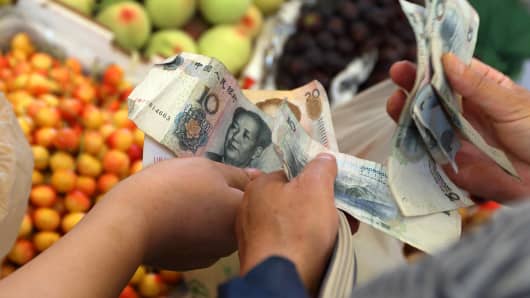However, it did not scrap an existing ceiling on deposit rates, currently set at 110 percent of benchmark rates, which many economists see as the most important step Beijing will eventually need to take in liberalizing its interest rate regime.
"This is a big breakthrough in financial reforms. Previously people had thought the central bank would only gradually lower the floor on lending rates. Now they scrapped the floor once and for all," said Wang Jun, senior economist at China Centre for International Economic Exchanges (CCIEE).
The move, which goes into effect on Saturday, will likely lower borrowing costs for businesses and individuals, ending what many observers said had been artificially high borrowing costs that benefited big state lenders at the expense of private enterprise.
"The reform this time does not expand the floating range on deposit rates. The main consideration is that deposit rate reforms will be more profound and need higher conditions," the central bank said in a statement.
China's big lenders, which include Industrial and Commercial Bank of China, China Construction Bank, Bank of China and Agricultural Bank of China, have generally resisted the long-awaited reform as it will likely hit their margins.
But analysts say that the change is necessary for credit to be allocated more effectively in the economy.
"It's another method of easing and a form of looser monetary policy," said Joe Neighbour, a senior broker at Central Markets in London.
Robert Sinche, global strategist at Pierpoint Securities, said the change could help banks compete more effectively with the corporate bond market, which has provided an alternative source of credit for larger firms in recent years.
"For those that do borrow from banks, only 11 percent of loans in the first quarter were priced below the benchmark rate. This implies that competition between banks is unlikely to drive rates significantly lower, particularly below the previous 30 percent discount," he said.
"While this is a further step in the development of market-determined rates for loans and deposits, it appears more evolutionary than revolutionary," he added.
The fact that Premier Li Keqiang took the step after just four months in office sends a signal that he and his administration are serious about making reforms aimed at rebalancing the world's second-largest economy.
"In principle, the change could lower borrowing costs, in particular by allowing banks to offer better rates to more credit-worthy borrowers. In practice, the immediate difference will be small," Mark Williams, chief Asia economist at Capital Economics in London, said in a client note.
"Nonetheless, this is a significant development for China's financial sector in the direction of having interest rates determined by market forces rather than government fiat."




